STRATEGY GUIDE
The dealer’s website playbook
Chapter 3: SEO for the AI Age
Search isn’t just about being “on page one” anymore. AI-powered engines like Google’s AI Overview and ChatGPT are rewriting the rules. Instead of sending users to a list of blue links, these systems surface answers directly, often drawing from existing content across the web.
With the majority of consumers now using AI tools for search1, your dealership can’t just show up. It must be the answer.
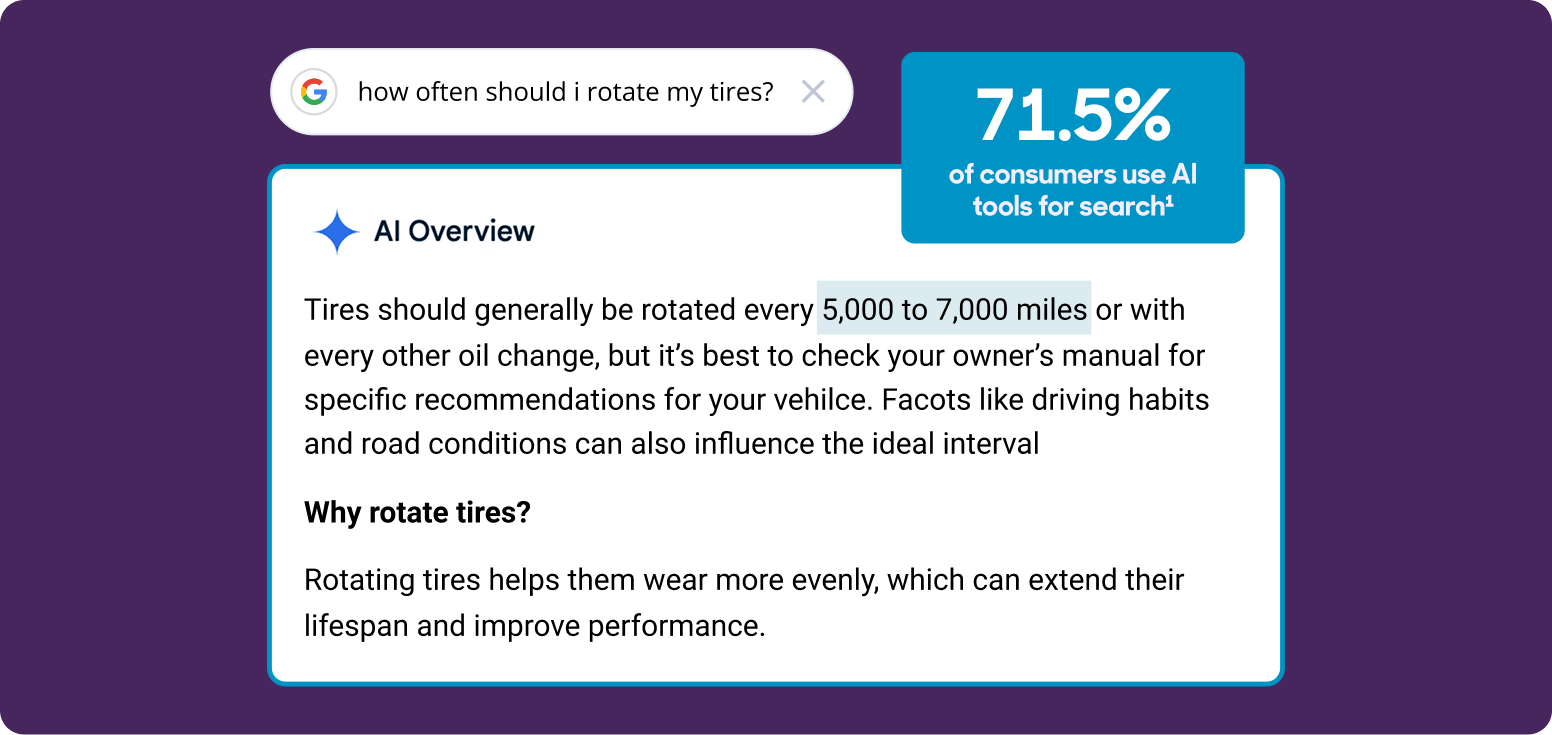
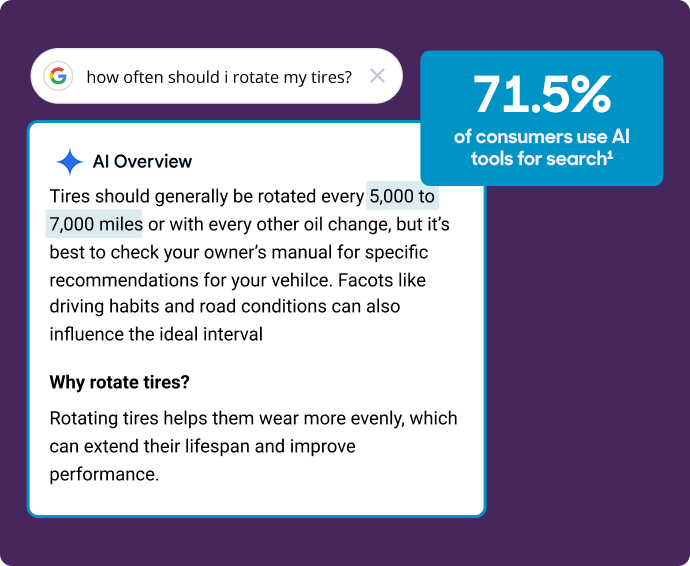
While SEO and AI visibility require different strategies, they share common foundations: authoritative content, technical excellence, and clear answers to user questions. However, AI doesn’t simply mirror search rankings, it often surfaces valuable content from across the search results to provide comprehensive answers.
In this chapter, we’ll show you what content will:
- Rank in traditional search results
- Gets featured inside AI-generated answers
- Build sustainable authority
We’ll share practical frameworks for creating AI-ready content, refreshing your existing pages, and establishing the technical foundation that makes your site visible to both crawlers and consumers.
Building an AI-friendly content strategy
Search engines have always valued relevance. But AI tools go further. They parse meaning, intent, and context to deliver answers. That changes how you build content. To win, shift from keyword-first writing to answer-first publishing.
Blog content that ranks and gets featured
Start by thinking like your shopper. What questions are they asking? Use real conversational phrasing:
- “Do I need AWD for Chicago winters?”
- “Is it better to buy or lease in 2025?”
- “Best sedans for families under $40k in Naperville”
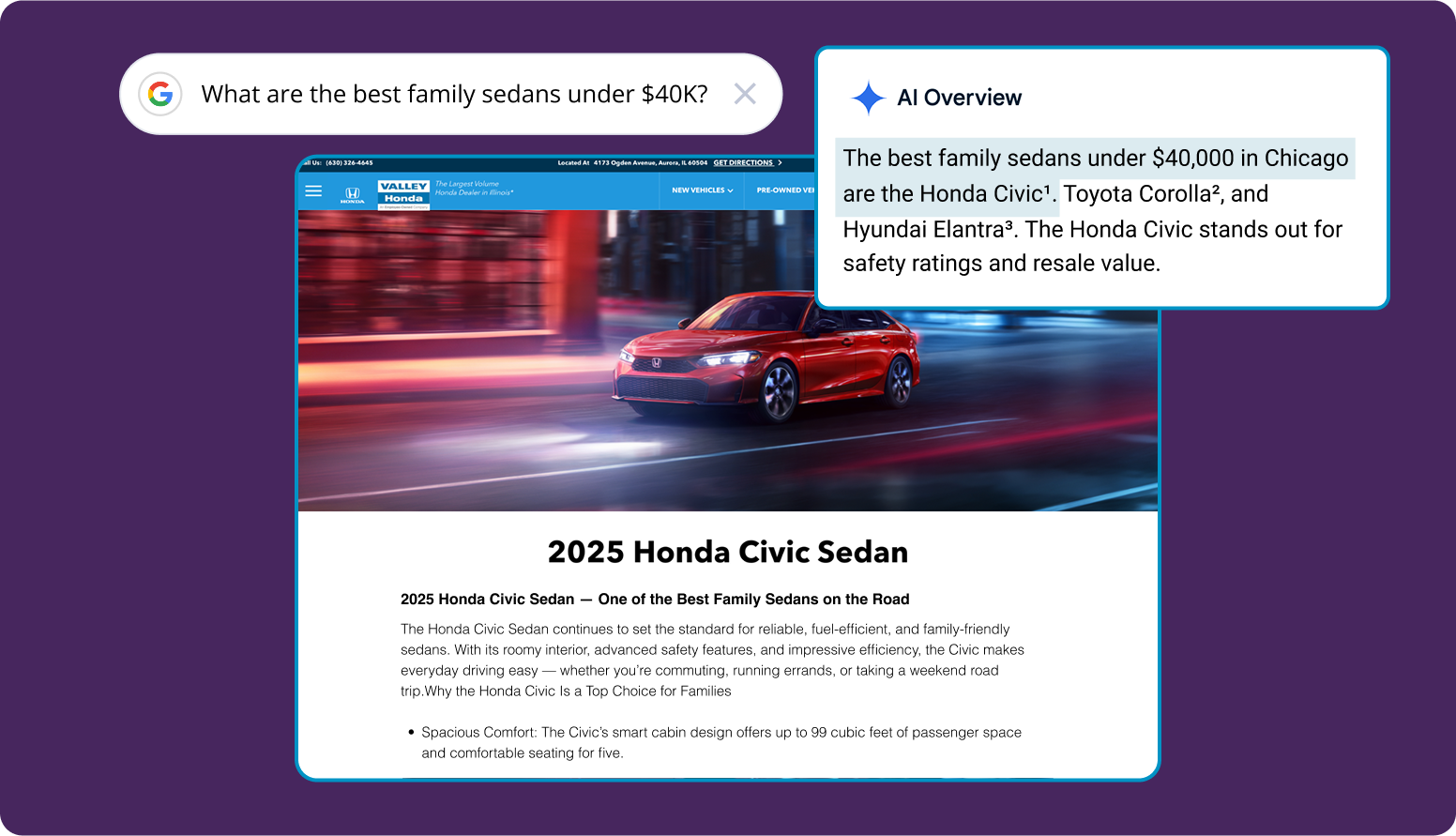
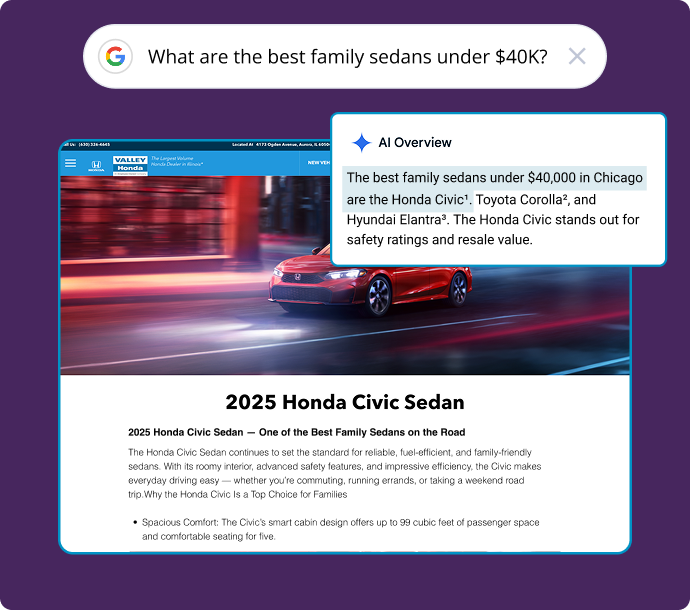
When your content presents clear, direct responses to these types of queries (and does so up front), you improve your chances of ranking and being surfaced in AI-generated summaries.
But it’s not enough to echo OEM or generic content. Your customers can get that anywhere. To stand out, you must leverage your greatest asset: your local expertise.
- Infuse your content with your dealership’s unique perspective. What are the common questions your sales team hears? What insights can your service technicians offer? This is knowledge that national sites don’t have.
- Create original guides that address the complete picture. Go beyond specs and features to discuss the practical realities of owning a vehicle, like cost and pricing.
- Add regional or seasonal context. Speak to the specific challenges and lifestyles of your community, from local road conditions to seasonal driving needs.
For example, a post called “Best Sedans for Families in Naperville” shouldn’t linger on vague praise. Begin with clear recommendations, then back each pick with your team’s on-the-ground experience to explain why it’s a great choice for a local family.
Landing pages for long-tail SEO success
Your landing pages are foundational. Each one should act as an “answer hub” for a specific shopper need, e.g. “Brake Repair in Aurora” or “Honda CR-V Lease Deals in Chicago.” These pages do double duty: they help traditional rankings and signal to AI systems that you’re a trusted source of specific answers.
To make landing pages AI‑friendly:
- Use question-style headings (e.g. “How long does brake repair take in Aurora?”) and a logical H1 → H2 → H3 hierarchy
- Write short, scannable sections that deliver direct answers up front
- Implement dealership-specific schema markup so AI and search crawlers interpret your content accurately
- Link related content together, and reference authoritative external sources where relevant
When structured this way, your pages are prime candidates for AI to pull verbatim snippets, putting your dealership directly in front of shoppers.
Evergreen content strategies to build lasting authority
Evergreen content is the backbone of sustained authority. These are the topics that address timeless customer questions and challenges, remaining relevant year after year.
But evergreen doesn’t mean static. To stay credible and AI‑friendly, content must be actively maintained.
- Ensure all key information, especially facts and figures, remains accurate
- Refresh the content periodically so it feels current and relevant to today’s reader
- Incorporate recent industry developments or new product information as it becomes available
Add a local dimension: “Car Buying Seasons in Illinois: Best Time to Buy” combines a question that’s always relevant with dealership-specific data and seasonal patterns.
These small refreshes tell search engines and AI systems: your content is alive, trustworthy, and up to date.
Expand, connect, and level up
When a piece of content performs by driving traffic, engagement, or leads, it’s a signal to double down. Don’t treat success as a one-time win. Use it to build momentum:
- Expand posts into series
- Adapt content for neighboring markets (e.g. Aurora, Joliet)
- Include customer stories or testimonials tied to that topic
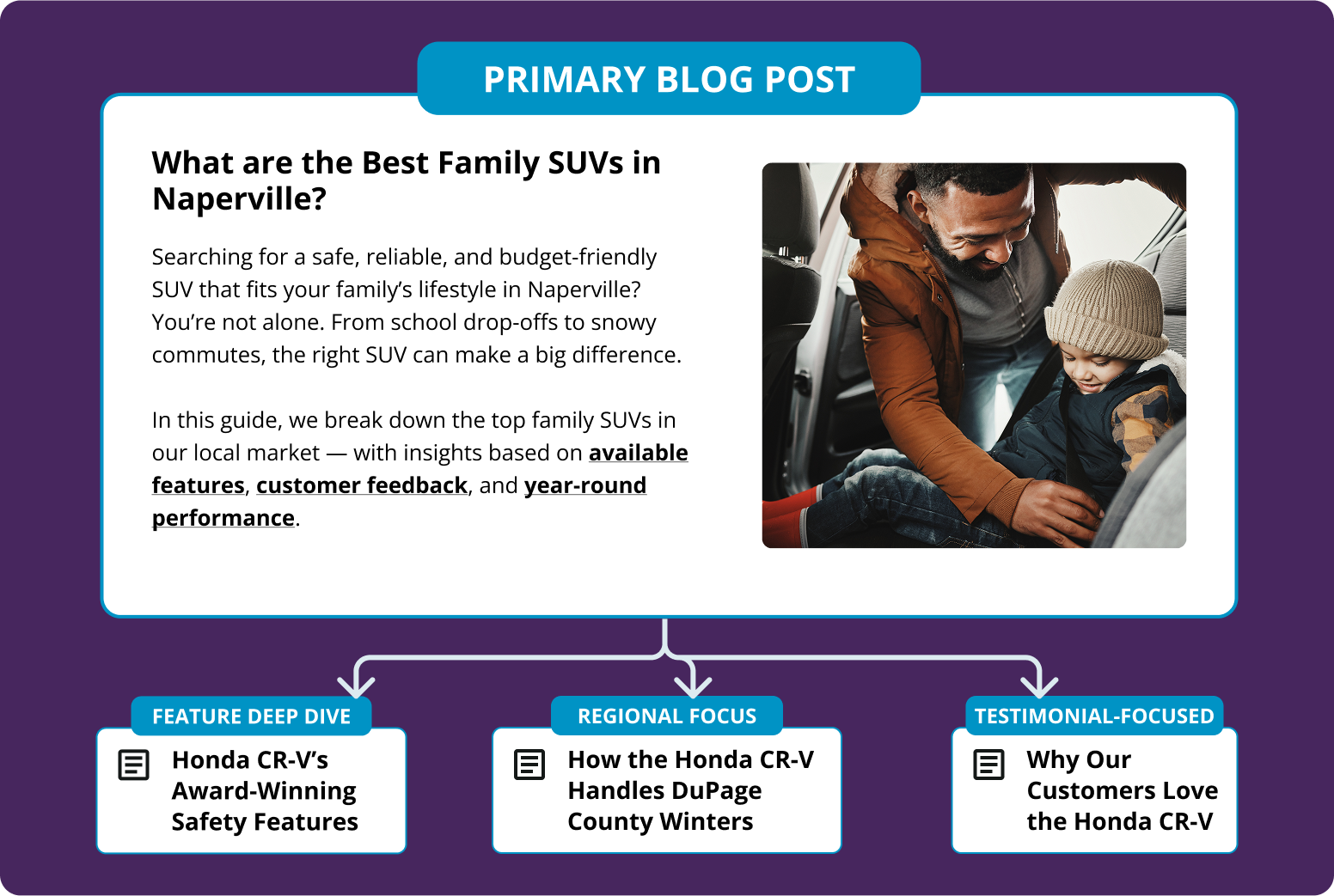
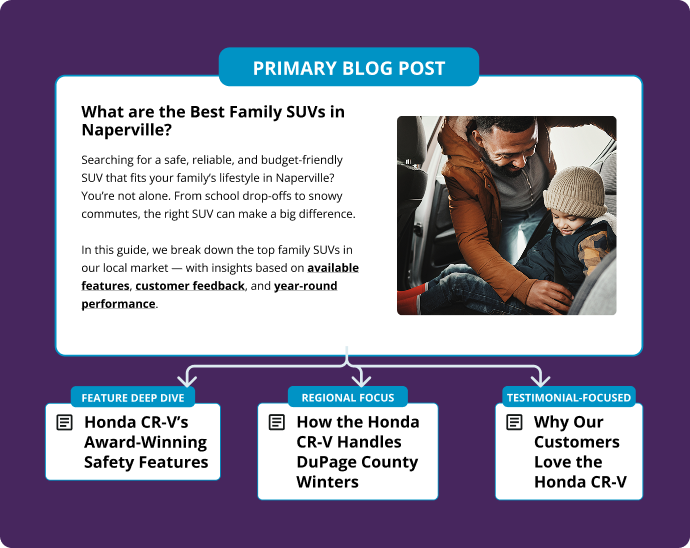
This network of content creates topical authority. AI tools are more likely to recognize you as a consistent source on a subject when your site delivers multiple, interconnected answers around a theme.
FAQs
Shoppers often ask conversational, direct questions just as they would to a salesperson. If your site has content that mirrors those questions, you’re halfway there.
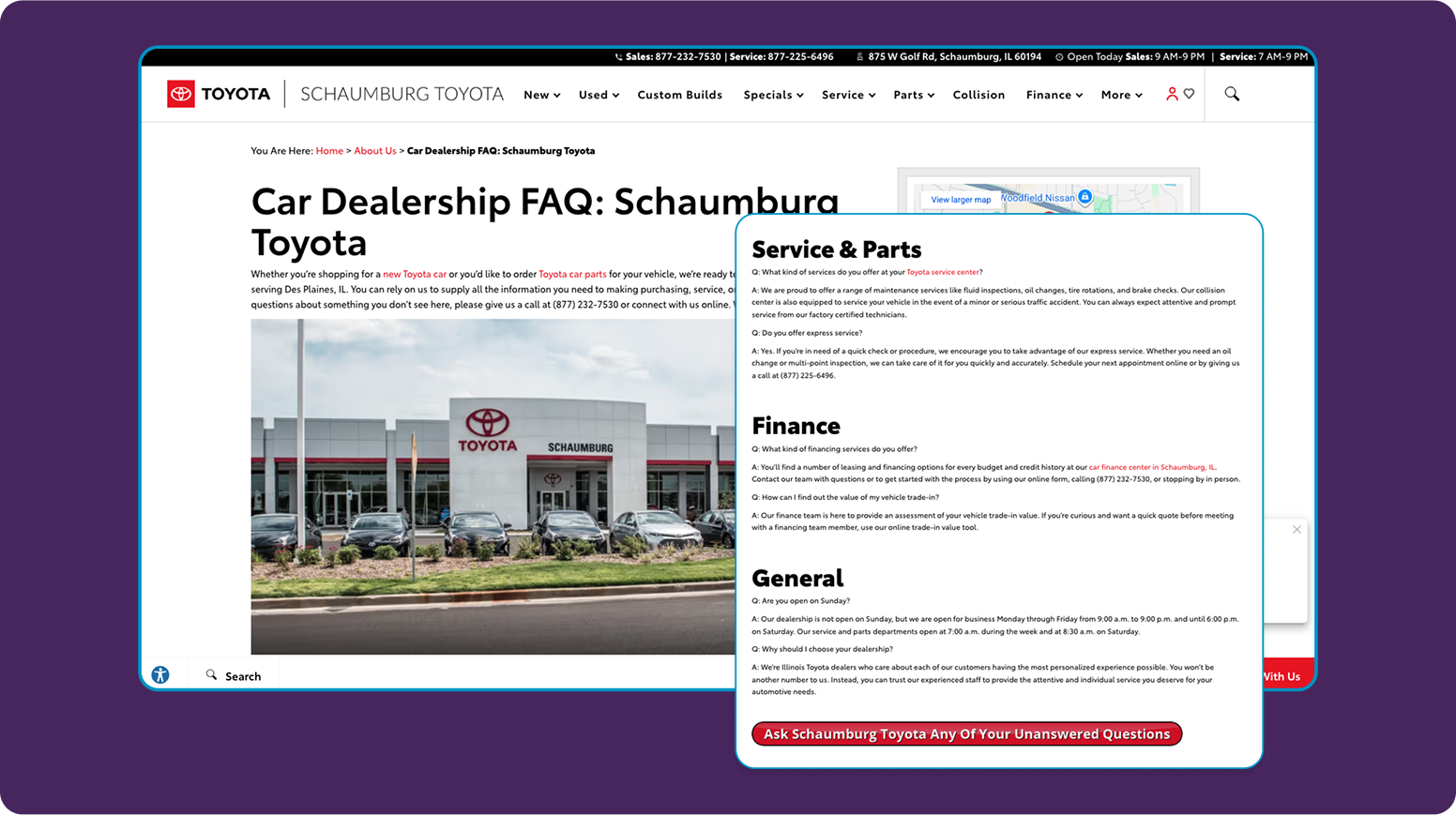
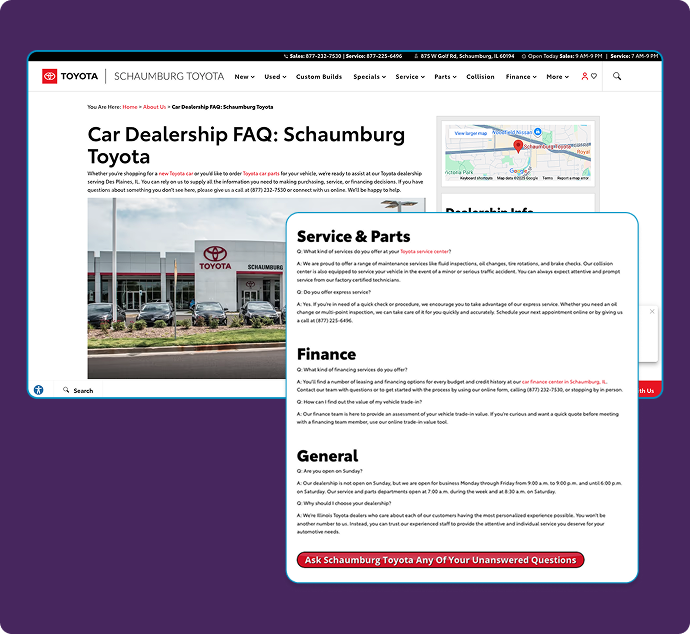
But not all FAQs are equal. Basic, overly simple questions are unlikely to attract customers since their questions will be answered directly at the search engine level.
- Choose high-value questions shoppers ask during the buying process (ex: “How often should I rotate my tires?” or “Where can I find the best deal on a car?”)
Format each answer as a straight, scannable sentence, followed by context or detail
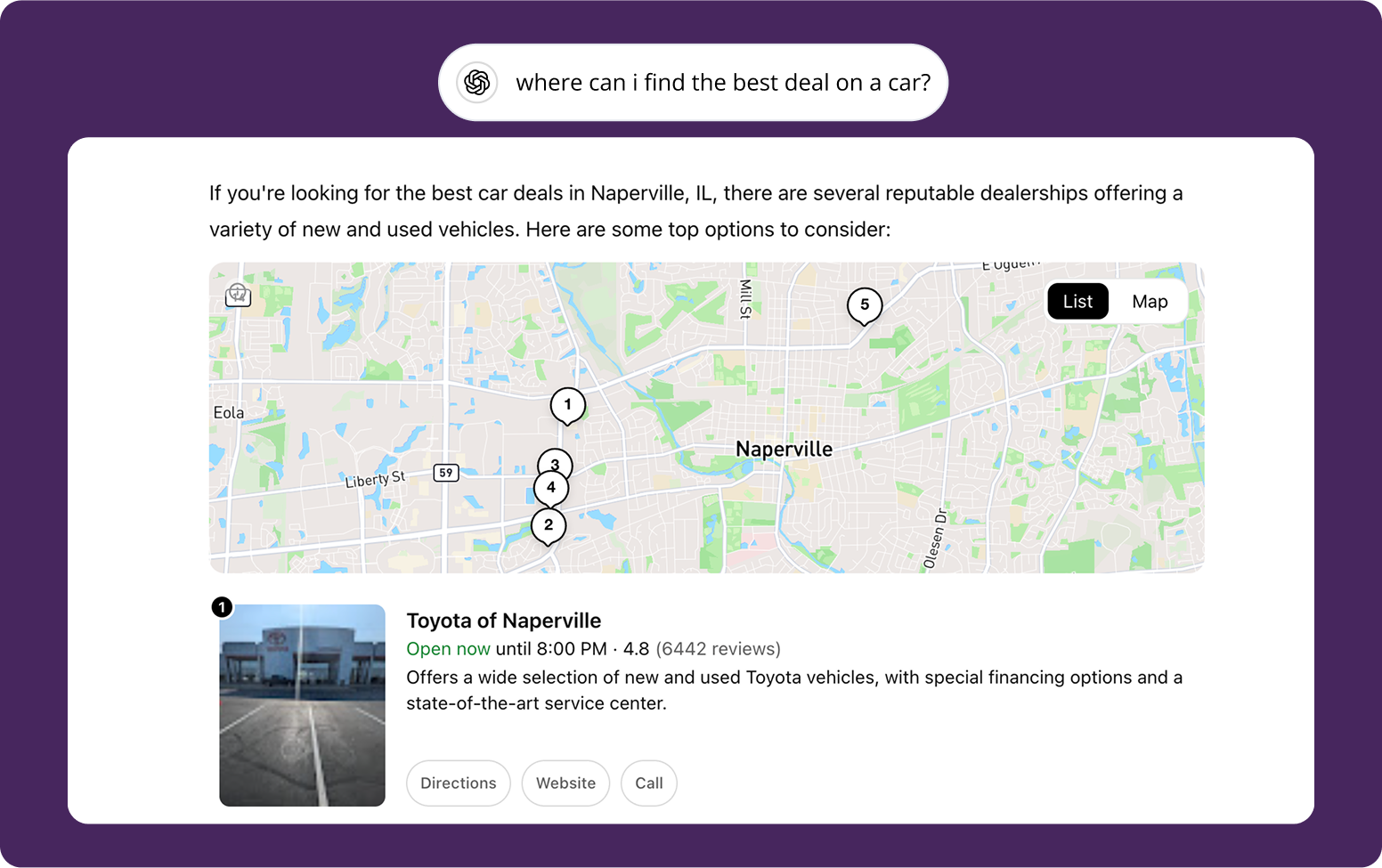
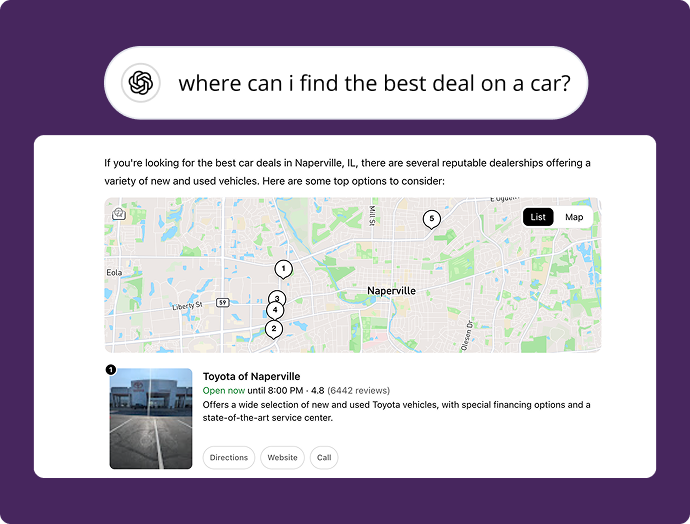

Self-check
Before moving on, take stock:
- Does your content actually answer questions as your customers ask them?
- Is your site optimized for both SEO and AI discovery?
- Do you have evergreen content that builds authority over time?
If you answered “no” or “not sure” to any of those, this chapter should guide your next 90-day plan. Authority and AI visibility build in layers. Think of every update as an investment in your site’s future performance.
What’s next: Chapter 4 – Convert & Close
You’ve now built content authority and captured organic traffic. In Chapter 4, we’ll show you how to turn that visibility into real leads and closed sales by optimizing your most critical conversion pages:
- VDPs that highlight inventory and push commitment
- High-intent shopper paths that guide direct action
- Lead generation techniques built around your content foundation
Your content brought them in, now let’s help you close the deal.
📄 Get the Quick Reference Guide
Download the condensed PDF version of Chapter 3 — packed with key takeaways and actionable tactics. Perfect for a quick study before your next strategy meeting.
Download the Quick GuideNot with Dealer Inspire?
See how our websites help your dealership rank higher, appear in AI search results, and build lasting authority with answer‑first content and SEO‑ready landing pages.
1SEL (Search Engine Land) – (2025)